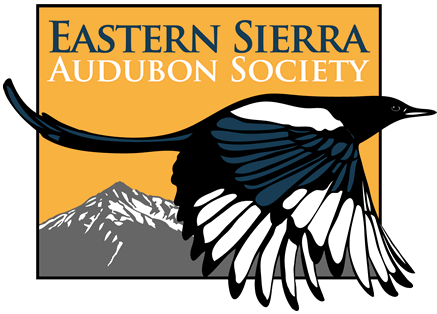[Originally appeared in the Sierra Wave newsletter, Vol. 24, No. 4, Mar-Apr 2006 – click here for original with photos]
Each fall, as migration slows down, birders begin looking forward to winter with anticipation. The Winter Season is the most unpredictable of all when trying to guess which species will visit us and in what numbers and when will they arrive and depart. The hope is that it will be a winter that brings visitors from the far north and drives mountain dwellers down out of the pines and into our parks, towns, backyards, and golf courses.
Bald Eagles and Tundra Swans are always welcome guests and this winter they arrived later than the average, but at least they got here! When the hunting pressure becomes too great they disappear for a few days but then return. This winter we had up to 16 swans and 3 Bald Eagles.
There have been no credible reports of Rough-legged Hawks this winter. In fall, one was well documented from Bishop 13 Nov 2005 by Jim and Debby Parker. Last year, 5 Feb 2005, they had one which was the only one reported that winter. This paucity is a continuing trend in recent decades. In the 1970s ten to twenty could be seen in a day, sometimes outnumbering Red-tailed Hawks.
There have been no reports of Northern Shrikes. They also seem to be in a down cycle with few reports over the last decade or two. There have been no reports of Barrows Goldeneye from the Eastern Sierra this winter. In recent times they have appeared at Pleasant Valley Reservoir but not this year.
There were no Rusty Blackbird reports either. This species has become so rare throughout the state that the California Bird Records Committee recently (January 2006) returned it to the review list. Now, if one is found, documentation must be submitted to the committee for peer review to determine if it qualifies as a record.
Nor has this been a winter for mountains birds. Ted Williams found one, a Brown Creeper, feeding in the junipers at the East Line Street cemetery in Bishop 17 Dec. Compared to other winters the reports of both Western Scrub-Jays and Stellers Jays have been in short supply. The same is true of Mountain Chickadees and Juniper Titmice. There have been no reports of special sparrows like Harris, Swamp, and White-throated.
On the upside, there was a 12 Jan report by Debby House of a Turkey Vulture flying over Bishop. There are only a few reports in Jan as this species is not expected until late February. Unexpected were Barn
Swallows, seen in Inyo and Mono counties this winter. They usually depart in October and dont begin to return until mid March. After the early January snow storm Kay Wilson had a Gray-crowned Rosy-Finch consuming seeds at her feeder in Bishop. This species is seldom seen on the valley floor but when their food supply in the mountains is covered by deep snow they are forced down and can only be delighted to find certain restaurants open for business.
Another winter highlight was from the southwest of Inyo County where Susan Steele, Inyokern, has been conducting regular bird surveys in the Sierra canyons. She has found Winter Wrens in at least three canyons. While we have many reports of fall migrants in Oct and Nov we were surprised that these birds appear to be wintering; there are precious few data for the winter months of this species.
Chris and Rosie Howard found a very rare Yellow-bellied Sapsucker at the Bishop Country Club on 17 Dec in the same tree where they had one a year ago! Gerry Wolfe reported from Furnace Creek Ranch, DVNP, that a Gray Flycatcher has spent the winter.
But Spring is about to spring because Larry Nahm reported the first spring migrant, a Cinnamon Teal in late January! This is typically our earliest spring migrant and it always arrives in winter! Near Big Pine the Great Horned Owls are sitting on eggs and the Great Blue Herons are testing their nests. True migrant swallows will be arriving in February and March preceding only slightly our gale force spring winds. Birders, always hopeful, are eager to see what new birds the new season will bring.
Tags: blackbird, crow, finch, flycatcher, hawk, heron, owl, sparrow, swan, vulture, wren
